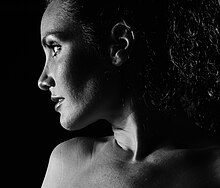Colour and Lighting
The first use of colour was seen in films such as Voyage a Travers L'Impossible in 1904. This was produced by a pioneer called George. They hand-printed each frame, so they are all still images.
The next development was the introduction of two-stripcolor using only green and red, such as the film, The Mystery of the Wax Museum, 1933. After that, the introduced the first full three strip Technicolor. This was introduced by Becky Sharp in 1935. From 1930's to the 1940's, colour represented fantasy and spectacle, while black and white represented reality. For example the film Wizard of OZ showed colour as a fantasy in the film. Colour also has a Denotation and Connotation. Denotation is the literal description of an idea, concept or object. Connotation is what we associated with a particular idea, concept or object. For example the denotation of the colour red would be an red coloured item, while the connotation of the colour red could be: Enemy, danger, death, love, anger and hot.

Lighting
Films use this to exaggerate or maybe give an illusions during the films. There are many different types of lighting. Firstly, the key light is the brightest and most influential. Secondly, the back light helps counteract the effect
, the filler light helps soften the harsh shadows that the use of key and backlights create. Furthermore, the under lighting is when the main source of lighting comes from below the subject. Additionally the top lighting is when the main source of the lighting comes from above, highlighting the features. This i used to create a glamorous look. Also high key lighting and low key lighting. Low key lighting is created by using only the key and the back lights. This will produce a sharp contrast of light and dark areas of the screen to be very deep. However in high key lighting more filler lights are used , which makes the lighting more realistic.

Lighting
Films use this to exaggerate or maybe give an illusions during the films. There are many different types of lighting. Firstly, the key light is the brightest and most influential. Secondly, the back light helps counteract the effect
, the filler light helps soften the harsh shadows that the use of key and backlights create. Furthermore, the under lighting is when the main source of lighting comes from below the subject. Additionally the top lighting is when the main source of the lighting comes from above, highlighting the features. This i used to create a glamorous look. Also high key lighting and low key lighting. Low key lighting is created by using only the key and the back lights. This will produce a sharp contrast of light and dark areas of the screen to be very deep. However in high key lighting more filler lights are used , which makes the lighting more realistic.
The standard lighting set-up looks like this:
Key Light: The brightest and most influential light.
Example:
Back Light: Helps counteract the effect of the key light or creates an outline or silhouette.
Example:
Filler Light: Helps to soften the harsh shadows the harsh that the use of key and back lights create. Example:



.jpg)




No comments:
Post a Comment